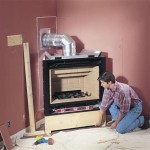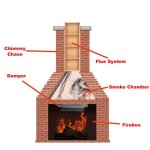Antique Fireplace Tools: A Historical and Practical Guide
Antique fireplace tools represent more than mere implements for managing fires; they are tangible links to the past, reflecting the craftsmanship, design sensibilities, and social practices of bygone eras. These tools, often forged from iron, brass, or steel, served essential functions in hearthside management and have evolved over centuries, reflecting changing architectural styles and heating technologies. Understanding the historical context and practical uses of these tools can significantly enhance appreciation for their aesthetic value and intrinsic worth.
The fireplace, for centuries, served as the central heating source and focal point of domestic life. Consequently, the tools designed to maintain the fire became integral household items. The specific tools and their design varied according to period, region, and the social standing of the inhabitants. Examining antique fireplace tools provides insights into the materials available, the forging techniques employed, and the decorative motifs prevalent during specific historical periods. Furthermore, the presence or absence of certain tools can indicate the types of fuel used and the overall lifestyle of the people who relied on the fireplace for warmth and sustenance.
Identifying Antique Fireplace Tools
The initial step in understanding antique fireplace tools is recognizing the function and components of a typical set. A complete set usually consists of a poker, shovel, tongs, and a brush, all held by a stand. Each tool fulfills a specific role in maintaining the fire, from moving logs and coals to removing ashes and debris.
The
poker
, typically a long metal rod with a pointed or hooked end, served to stir and rearrange the burning wood or coals. Its design allowed for manipulation of the fire from a safe distance, encouraging more efficient combustion and directing heat as needed. Variations in poker design can indicate the specific types of fuel used. For instance, pokers designed for coal-burning fireplaces might have a more robust construction to break up clinkers.The
shovel
was used to scoop up ashes and embers for disposal. Its size and shape varied depending on the size of the fireplace and the frequency of cleaning. Shallow, wide shovels were often used in smaller hearths, while deeper, more substantial shovels were necessary for larger fireplaces that produced greater quantities of ash. Materials used in the construction of the shovel, such as brass or copper, often indicate a higher status or decorative intent.The
tongs
were designed for gripping and moving burning logs or coals. They typically feature long handles and a pivoting mechanism that allows the user to grasp and manipulate the fuel with precision and safety. The design of the tongs' gripping ends can provide clues about the specific purpose they served. Some tongs were designed with serrated edges for a more secure grip on larger logs, while others had smoother surfaces for handling smaller pieces of fuel.The
brush
was used to sweep up any remaining ash or debris from the hearth. Traditionally, these brushes were made with natural bristles, such as hog or horsehair, and a wooden handle. Over time, wear and tear on the brush can reveal the intensity of fireplace use and the care taken in its maintenance.The
stand
, also known as a tool rest or caddy, served as a holder for the individual tools. The design of the stand often reflected the aesthetic sensibilities of the period and could range from simple wrought iron frames to elaborate brass or cast iron structures. The stand not only provided convenient storage for the tools but also served as a decorative element in the fireplace setting. The presence of ornate detailing, such as scrollwork, finials, or animal motifs, can indicate the age and quality of the set.Dating and Identifying Period Styles
Determining the age and style of antique fireplace tools requires a keen eye for detail and familiarity with historical design trends. The materials used, the manufacturing techniques employed, and the decorative motifs present can all provide valuable clues about the tool’s origin and age.
Materials:
The earliest fireplace tools were typically made of iron, reflecting the widespread availability of this material and the blacksmithing techniques that prevailed. As metalworking technology advanced, brass and steel became more common, particularly in wealthier households. The presence of brass or steel embellishments on iron tools can suggest a later period or a higher level of craftsmanship. The type of wood used for handles, if present, can also provide clues. For example, mahogany or walnut handles might indicate a period of increased prosperity and availability of exotic materials.Manufacturing Techniques:
Early iron tools were often hand-forged by blacksmiths, resulting in unique variations and imperfections. These imperfections, rather than detracting from the value, often add to their character and authenticity. As industrialization progressed, mass-produced tools became more common, characterized by greater uniformity and less individual artistry. Identifying the manufacturing techniques used can help distinguish between hand-forged and machine-made tools.Decorative Motifs:
The decorative motifs present on antique fireplace tools can provide valuable insights into the prevailing aesthetic tastes of the period. Common motifs include floral patterns, geometric designs, animal figures, and heraldic symbols. For example, Victorian-era tools often feature elaborate scrollwork and floral embellishments, while Art Deco tools are characterized by streamlined shapes and geometric patterns. Examining these details can help place the tools within a specific historical context.Hallmarks and Maker's Marks:
Some antique fireplace tools bear hallmarks or maker's marks, which can provide definitive information about their origin and manufacturer. These marks are typically stamped or engraved onto the metal and can be researched to determine the tool’s age and provenance. Reference books and online databases dedicated to antique hallmarks and maker's marks can be invaluable resources for identifying and authenticating antique fireplace tools.Different periods exhibited distinct styles in fireplace tool design. For instance, Georgian tools often featured elegant, understated designs with simple lines and classical motifs. Victorian tools, on the other hand, were typically more ornate and elaborate, reflecting the Victorian era's penchant for decorative excess. Art Nouveau tools were characterized by flowing, organic forms inspired by nature, while Art Deco tools embraced geometric shapes and modern materials.
Caring for Antique Fireplace Tools
Preserving antique fireplace tools requires a commitment to careful handling, cleaning, and storage. These tools, often centuries old, are susceptible to rust, corrosion, and physical damage. Proper care can help maintain their aesthetic appeal and prevent further deterioration.
Cleaning:
The cleaning process should be gentle and non-abrasive to avoid damaging the surface of the tools. Remove loose dirt and debris using a soft brush or cloth. For stubborn grime, a mild soap and water solution can be used. Avoid harsh chemicals or abrasive cleaners, as these can strip away the patina and damage the underlying metal. After cleaning, thoroughly dry the tools to prevent rust formation.Rust Prevention:
Rust is a common problem with antique iron and steel tools. To prevent rust, apply a thin coat of oil or wax to the metal surfaces. Renaissance Wax is a popular choice for preserving antique metal objects, as it provides a protective barrier against moisture and air. Regular application of oil or wax can help maintain the tool’s appearance and prevent further corrosion.Storage:
Proper storage is essential for preserving antique fireplace tools. Store the tools in a dry, well-ventilated area to prevent moisture buildup. Avoid storing them in damp basements or humid environments, as these conditions can accelerate rust and corrosion. If possible, store the tools in their original stand or a custom-made display case to protect them from physical damage.Repair and Restoration:
Minor repairs, such as tightening loose handles or repairing small cracks, can be performed by a skilled metalworker or restorer. However, avoid attempting major restorations without professional expertise, as improper techniques can cause irreversible damage. When considering restoration, carefully weigh the potential benefits against the risk of altering the tool’s original character and value.Antique fireplace tools offer a fascinating glimpse into the past. Their design, materials, and craftsmanship reflect the social, economic, and technological conditions of their time. By understanding the historical context and practical uses of these tools, one can gain a deeper appreciation for their aesthetic value and intrinsic worth. Proper care and preservation can ensure that these tangible links to the past continue to be enjoyed for generations to come.

Antique French Fireplace Tools T4086a Charles Nijman Antiques

Old Brass Iron Fireplace Tools English Country Home

Tool Sets Vintage Fireplace Tools Adams

Antique French Fireplace Tools T5124 Charles Nijman Antiques

Vintage Brass Fireplace Tool Set Olde Good Things

Antiqued Brass Fireplace Tool Set Reviews Crate Barrel

Vintage Hammered Metal Iron Fireplace Tool Set 4 Tools With Stand

Must Have Vintage Fireplace Tools Adams

Antique Brass Fireplace Tools Set Norway

1900s Antique Fireplace Tool Set Eagle Solid Brass 5 Piece
Related Posts








